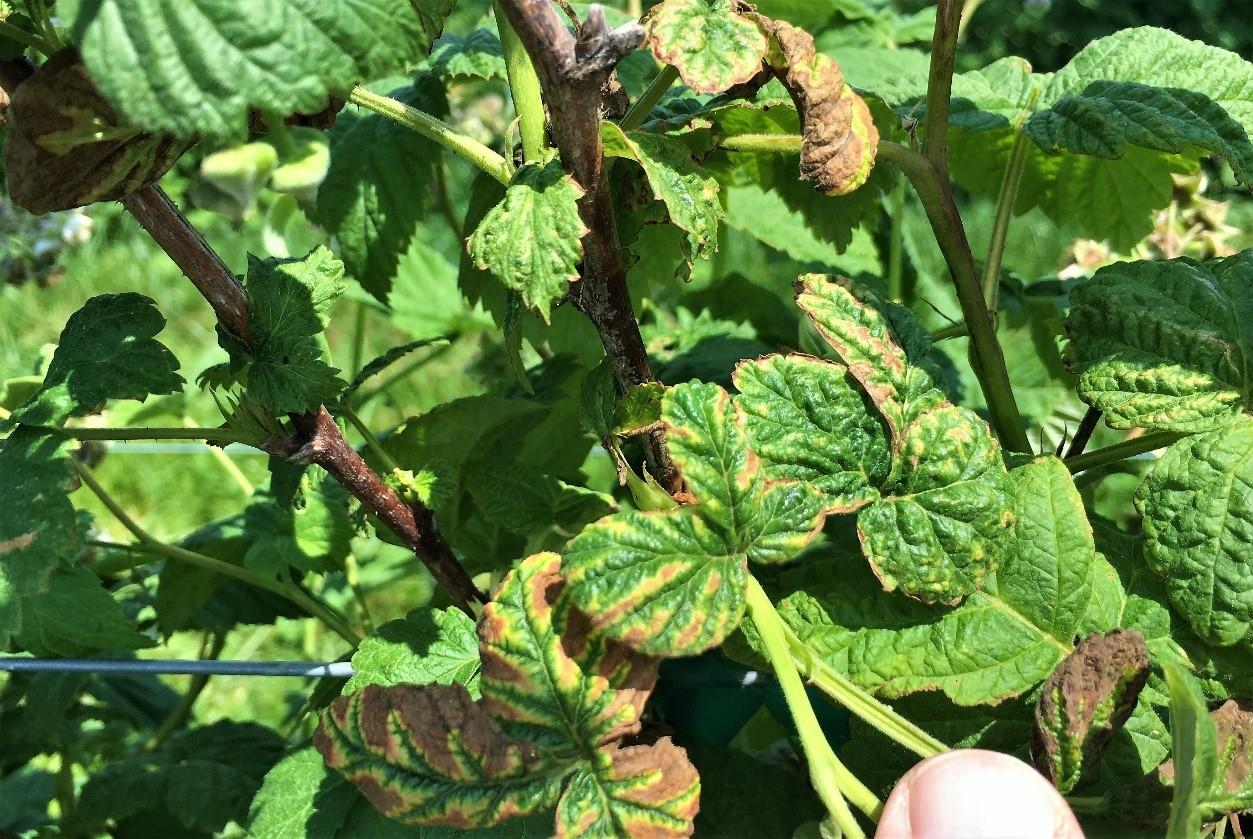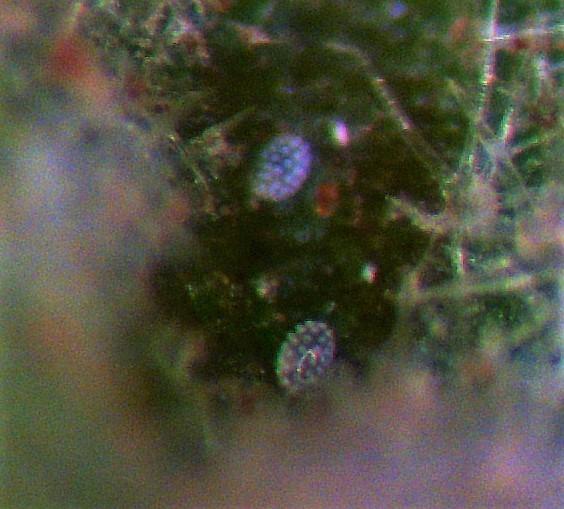Broad Mites Found in Maryland Caneberries
About two weeks ago I heard some reports of possible damage caused by broad mites Polyphagotarsonemus latus in caneberries in the mid-Atlantic region. So I ventured out and looked at several raspberry and blackberry growing operations in Maryland. I found one farm with a light to moderate infestation of broad mites in their raspberries. This operation was relatively small consisting of a little more than a ¼ acre or so of caneberries. The problem with knowing whether or not you have broad mites is that the mites are so small, they are very difficult to find even with a 10x hand lens and their feeding can look very similar to the damage caused by some environmental problems or by viruses (which are usually the cause of the damage symptoms). Damage by broad mites usually consists of a distortion of young leaves (fig. 1) or flower buds as the mites show a preference for young, developing plant tissue. This feeding preference will result in the lower leaves of the plant remaining unaffected while the younger leaves are damaged.
Mites feed on the underside of foliage near the leaf stalk. This feeding often causes the growing tips to become misshapen with distorted leaves that curl up and have irregular brown discoloration. An infestation of mites can result in brown stripes that form on the leaves (fig. 2). A more serious infestation causes a total loss of green tissue, with the veins remaining green on a brown background. On the leaf stalks brown, corky patches can appear. What exactly causes the leaf tissue distortion and browning is not known, although it is thought that the mites release enzymes and other substances when they feed that disrupt localized plant growth. These distortions remain for weeks even after the mites have been eliminated and is the reason why extensive damage can be caused by a relatively low population of mites. Flowers that are fed upon will become discolored and deformed while fruit will develop corky areas and also become deformed.
When I look for broad mites I look for their eggs which are very distinctive, relatively large and are not moving around as adults and immatures are. The eggs are clear with a symmetrical pattern of white dots on their surface (fig. 3). Even with a 20X hand lens it is still difficult to find the mites as they are often wedged down into folded or curled plant tissue. It really is important though to verify their presence as there are other causes of similar looking symptoms on raspberries and blackberries as I have learned.
When mite numbers reach 5 mites per leaflet (granted it will be difficult to see) or leaf deformities are found then treatments should begin. Horticultural oils are recommended when temperatures are below 88o F. Using the oils at temperatures above this may cause phytotoxic problems. Agri-Mek with a NIS has been found to be an effective product to control the motile stages of broad mites but it does not control the eggs so you’ll need to make two applications 7-days apart. There are other miticides that are available and can be used, but the key to any of them and the oils is to get good coverage of the curled and distorted plant tissue especially the underside of the leaf.


